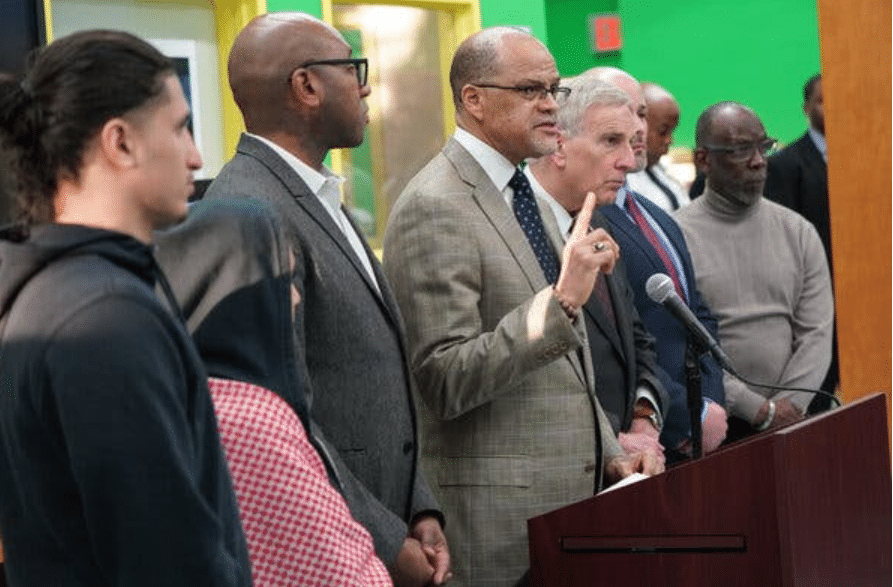The New York schools chancellor promised disciplinary action but also called for understanding students’ viewpoint after hundreds at a Queens high school protested against a Jewish teacher.
New York City officials are investigating after hundreds of Queens high school students protested against a pro-Israel teacher, who was moved to another part of the building during the demonstration, the schools chancellor said Monday.
The recent episode at Hillcrest High School erupted after the teacher, who is Jewish, had changed a social media profile photo to an image of her holding up an “I Stand With Israel” sign, the chancellor, David C. Banks, said. On Nov. 20, as roughly 400 teenagers roamed the school in between class periods, the teacher was moved to a different floor, Mr. Banks said.
Mr. Banks said the teacher had been targeted for her backing of Israel and for “expressing her Jewish identity,” adding that it was “completely unacceptable.”
[The New York Times Report continues]
But on Monday, Mr. Banks said there had been “many rumors and misinformation” about what happened. The teacher “was never in direct danger” or barricaded into a room, he said, but was moved to a different floor of the building when the protest began.
“Violence, hate and disorder have no place in our schools,” Mr. Banks, who himself attended Hillcrest in the 1970s, said at a news conference.
[The New York Times Report continues]
The incident at Hillcrest was a stark example of just how fraught the fallout from the war has been for school communities across the nation.
At times, videos of students marching through campuses or banging on classroom doors have gone viral — setting off swift firestorms. In San Francisco, for example, students said their peers and administrators had their personal information published online after a short clip of teenagers shouting “Palestine will be free from the river to the sea” during a school rally was viewed more than 17 million times on X, the platform formerly known as Twitter.
[The New York Times Report continues]
School officials said some of the students involved in the protest had received suspensions for their conduct, though the officials were barred from discussing individual cases.
[The New York Times Report continues]
In interviews, a half-dozen students, who asked that their names not be published, shared mixed feelings about what had taken place. Several were frustrated over how their school had been portrayed online. One called the episode unacceptable and said he worries for his safety if other incidents occur.
Most of the teenagers said they believed that while some of their peers sought to protest the teacher’s post and express support for Palestinians, many of their classmates participated because they wanted to have fun or were curious about the commotion.
[The New York Times Report continues]
Two teachers at the school, who spoke on condition of anonymity since they were not authorized to speak publicly, said they believed their school mishandled its response to the initial incident.
Some Hillcrest students had openly discussed their plans in the lead-up to Nov. 20, the two teachers said. By the weekend beforehand, they said, the Jewish teacher had learned she could be a target and informed a union representative and the principal.
But those details were not shared with the full staff, the two teachers said, adding that they felt blindsided when chaos erupted. Both said they wished for more robust communication. And they questioned whether the protest could be have been better controlled with more preparation.
Muhammad Ghazali, the student government president for the school’s senior class, said at the news conference he was disappointed with how the events unfolded, adding that the “entire Hillcrest community was hurt and broken” because of how some students behaved.
“It didn’t turn out the way it should have been,” he said. “It was meant to be a peaceful protest from the very beginning. But some of these students lack maturity.”
View this New York Times Report from November 27th

